WE HAD a fine crowd that night. The day was bright; the sunset was rosy; the night was mild. On days like that, people get the urge to wander, and Small’s beckons as an easy getaway. At dinner, the dining room was nearly full. Elaine returned, and for a while Lou was so busy behind the bar that she had to play cocktail waitress. Albertine had to shout over the buzz of voices to introduce my reading of episode twelve of Dead Air, “Rush Service.”
IF YOU TOOK YOUR PICTURES to be developed and printed at Himmelfarb’s Photography Shop on Upper Bolotomy Road, just north of Main Street, in Babbington when I was a boy, you could get regular service or rush service.
Regular service was exactly the same as the service you could get at the drugstore across the street: a man in an unmarked truck came around once a week and picked the film up, and a week later the same man in the same truck brought your pictures back. Ordinarily, regular service was fine. One of its features was the sweet pain of waiting, one of the paradoxes of our emotional life, an ache that is complicated and compounded by its constant companion, anticipation. I would drop my film off at Himmelfarb’s and then for an entire day I would feel light, relieved that the film was out of my hands, the responsibility for it off my shoulders. A couple of emotionally neutral days would pass, and then, on or about the fourth day, a tightness would begin to ripple across my back, and by the sixth day, this expectant tension would have me twitching and itching. Sometimes I tried dropping in at Himmelfarb’s on the sixth day to see if the pictures had come in early. They never were early; regular service always took a full week.
Not everyone was willing to wait a week. If you were in a hurry, you could pay the “rush” price, a dollar extra, and Mr. Himmelfarb would develop and print your pictures himself, in his darkroom in the back of the shop. You could have them the next day. I had never used the rush service, though I’d spent a considerable amount of my allowance and earnings at Himmelfarb’s. For a while I had even been his competitor in the photographic-services business. I had ordered a developing and printing outfit by mail and advertised myself throughout my neighborhood as an adept in the mysteries of the craft. I got one customer, Mrs. Jerrold, an attractive housewife who lived in my neighborhood, but when I tried to develop and print her pictures I discovered that I didn’t know what I was doing. After that experiment, I returned to Mr. Himmelfarb for my developing and printing needs. I kept Mrs. Jerrold as a customer because I was attracted to her and eager for any excuse to visit her, and because I was too embarrassed to tell her that I had given up the photographic-services business after a single setback. I picked up her film whenever she called and then took it to Mr. Himmelfarb. When the pictures came back, I took them and their negatives out of their yellow envelope and repackaged them in a small brown paper bag, the sort of thing a kid would use if he were a supplier of photographic services on the neighborhood level. An important reason for my perpetrating this deception was the fact that I got to see all of Mrs. Jerrold’s pictures, and her husband took some that could have been called cheesecake. I spent a while looking at those through a magnifying glass; I always suspected that Mr. Himmelfarb did, too.
With an air of self-importance, I tossed my film onto the counter and said, “Rush, please, Mr. Himmelfarb.”
“Rush!” said Mr. Himmelfarb. “Must be something important.”
I tried to be nonchalant, so that Mr. Himmelfarb would see that I was growing up and beginning to take my place in the world as a young fellow who used rush service whenever it suited him.
“Oh, nothing special.”
“Vacation pictures?”
“Nope.”
“A new baby in the family?”
“Uh-uh.”
He leaned across the counter, looked me in the eye, and winked. Drawing the words out, he asked, “A girlfriend?”
“No,” I said. “They’re just experiments. I was trying to get some action shots — you know, following the action with the camera, the way the book says.” (I wasn’t about to tell him that I had taken a picture of a handful of clams that Porky White tossed into the air to settle a dispute about whether airborne objects — saucers, pie plates, clams — would look like flying saucers to the untrained eye. It sounded like a ridiculous experiment even to me.)
“Uh-huh.”
“And,” I said, under the influence of another wave of self-importance, “There are some more pictures I took at Kap’n Klam.”
“For the Wall of Happy Diners,” he said.
“Yeah,” I said, and, still surfing on self-importance, I added, “and for their advertising, too. I’m doing their advertising.”
“Really?”
“Oh, sure. I’m an investor, you know.”
“An investor! In what?”
“In Kap’n Klam.”
“Oh, I see,” he said. Then, with the clear implication that he understood, now, that I was running an errand for Porky, he said, “So this is a rush order for Mr. White.”
“Yeah,” I said, and I wondered at what point, exactly, I had gone too far, when, exactly, he had stopped believing me.
[to be continued]
Have you missed an episode or two or several?
You can begin reading at the beginning or you can catch up by visiting the archive or consulting the index to the Topical Guide. The Substack serialization of Little Follies begins here; Herb ’n’ Lorna begins here; Reservations Recommended begins here; Where Do You Stop? begins here; What a Piece of Work I Am begins here; At Home with the Glynns begins here; Leaving Small’s Hotel begins here.
You can listen to the episodes on the Personal History podcast. Begin at the beginning or scroll through the episodes to find what you’ve missed. The Substack podcast reading of Little Follies begins here; Herb ’n’ Lorna begins here; Reservations Recommended begins here; Where Do You Stop? begins here; What a Piece of Work I Am begins here; At Home with the Glynns begins here; Leaving Small’s Hotel begins here.
You can listen to “My Mother Takes a Tumble” and “Do Clams Bite?” complete and uninterrupted as audiobooks through YouTube.
You can ensure that you never miss a future issue by getting a free subscription. (You can help support the work by choosing a paid subscription instead.)
At Apple Books you can download free eBooks of Little Follies, Herb ’n’ Lorna, Reservations Recommended, Where Do You Stop?, What a Piece of Work I Am, and At Home with the Glynns.
You’ll find overviews of the entire work in An Introduction to The Personal History, Adventures, Experiences & Observations of Peter Leroy (a pdf document), The Origin Story (here on substack), Between the Lines (a video, here on Substack), and at Encyclopedia.com.

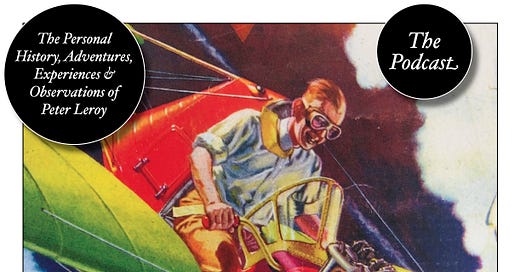





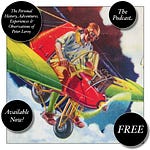



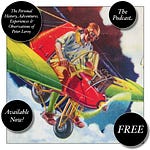
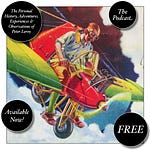
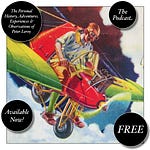
Share this post